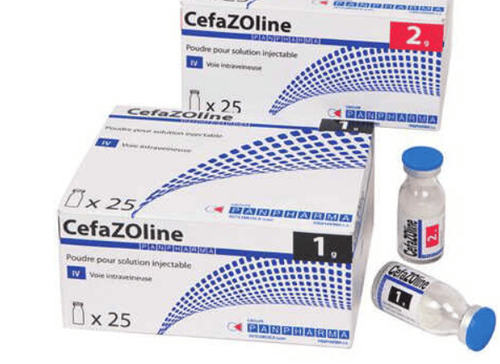This is an automatically translated article.
Fipam is a drug containing the main ingredient Cefepime with the use of treating bacterial infections on the body. In order to use the drug effectively, patients need to learn some information about the uses, doses and notes when using Fipam in the article below.
1. What is fipam?
Fipam contains the main ingredient Cefepime in the form of Cefepime hydrochloride 1g. This is an antibiotic belonging to the Beta lactam family, the fourth generation Cephalosporin group. The antibacterial activity of the drug in the following groups of bacteria is as follows:
Commonly susceptible bacteria with CMI ≤ 4mg/l including over 90% of strains of the species sensitive to antibiotics (S) such as: Escherichia coli, Salmonella, Proteus mirabilis, Shigella, Proteus vulgaris, Citrobacter diversus, Morganella morganii; Providencia, Enterobacter, Citrobacter freundii*, Klebsiella oxytoca, Serratia; streptocoques, penicillin-sensitive Streptococcus pneumoniae; Haemophilus influenzae, Branhamella catarrhalis, Neisseria; Peptostreptococcus, staphylocoques sensitive to methicillin, Clostridium perfringens. Moderately sensitive bacteria such as Pseudomonas aeruginosa . Bacteria that are resistant (CMI > 32mg/l) such as Entérocoques, staphylocoques resistant to meticilline, Listeria, Pseudomonas cepacia, Clostridium difficile, Xanthomonas maltophilia, Gram-negative anaerobes.
2. Indications for taking Fipam
Indications for treatment are based on the antibacterial activity and pharmacokinetic properties of Cefepime.
In adults, Fipam is usually prescribed for the following cases:
Bacteremia and bacteremia; Urinary tract infections with and without complications; Community-acquired lower respiratory tract infections and severe pneumonia, patients with fever accompanied by neutropenia; Bile duct infection. In children, Fipam is often used to treat:
Pneumonia, skin and skin structure infections; Urinary tract infections with or without complications; Sepsis, meningitis, fever, leukopenia. Contraindicated to use Fipam in the following cases:
Hypersensitivity to Cefepime or other Cephalosporin, Penicillin or Beta-lactam antibiotics. Sensitive subjects such as kidney failure patients, pregnant and lactating women, children under 2 months old should not use this drug.
3. Instructions for using Fipam
Fipam is used intravenously with a treatment time of 7-10 days.
For adults and children over 40 kg:
Mild and moderate infections: Intravenous 0.5 - 1 g/12 hours. Severe infections: 2 g IV every 12 hours. Life-threatening infections: 2 g IV every 8 hours. For children under 40 kg:
Intravenous dose of 50mg/kg/8 - 12 hours. Children under 2 months of age:
30 mg/kg IV every 8-12 hours.
4. Side effects of the drug Fipam
Some possible reactions when using Fipam include: Rash, urticaria, itching, nausea, vomiting, diarrhea, pseudomembranous colitis, inflammation at the injection site, headache, fever, yinitis vaginal discharge, erythema, constipation, abdominal pain, vasodilatation, dyspnea, paresthesia, dizziness, genital pruritus, taste disturbance, oral candidiasis. Very rare cases occur such as chills, convulsions, anaphylaxis. Above is information about uses, dosage and precautions when using Fipam. To ensure safety for your health and maximize the effectiveness of your treatment, you need to take Fipam exactly as directed by your doctor.













